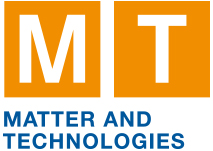Speaker
Description
Synchrotron facilities worldwide are undergoing major upgrades to next-generation sources, increasing their brilliance by more than one order of magnitude. This results in significantly higher photon flux on the sample—and consequently, much higher X-ray intensities on the detectors. Such conditions pose substantial challenges for detector technology, which must now sustain intensities several orders of magnitude beyond current capabilities.
To address this, new single-photon counting detectors with enhanced count-rate capabilities are being developed, employing novel counting architectures to achieve rates exceeding 10 million photons per pixel per second. For even higher intensities, charge-integrating detectors operating at multi-kilohertz frame rates are under active development. As experiments become faster and more efficient, time-resolved applications are gaining increasing interest, driving the need for detectors capable of frame rates above 10 kHz. At the same time, applications previously limited by low photon flux are now becoming feasible, motivating interest in detectors that can resolve single photons, offer energy discrimination, and potentially achieve super-resolution beyond the pixel pitch.
As time resolved experiments are gaining interest, fast large area detectors deliver enormous data throughput, and thus require innovative data-handling and processing solutions.
Moreover, the required detector technologies span a broad energy range—from a few hundred eV to several tens of keV—necessitating sensor developments beyond standard silicon. Promising developments include LGADs optimized for soft X-rays at low energies and high-Z compound semiconductors such as GaAs and CZT for higher energies.
The current transition to brighter light sources marks an exciting and challenging period for detector development in photon science, opening opportunities to explore new methods and technologies.

